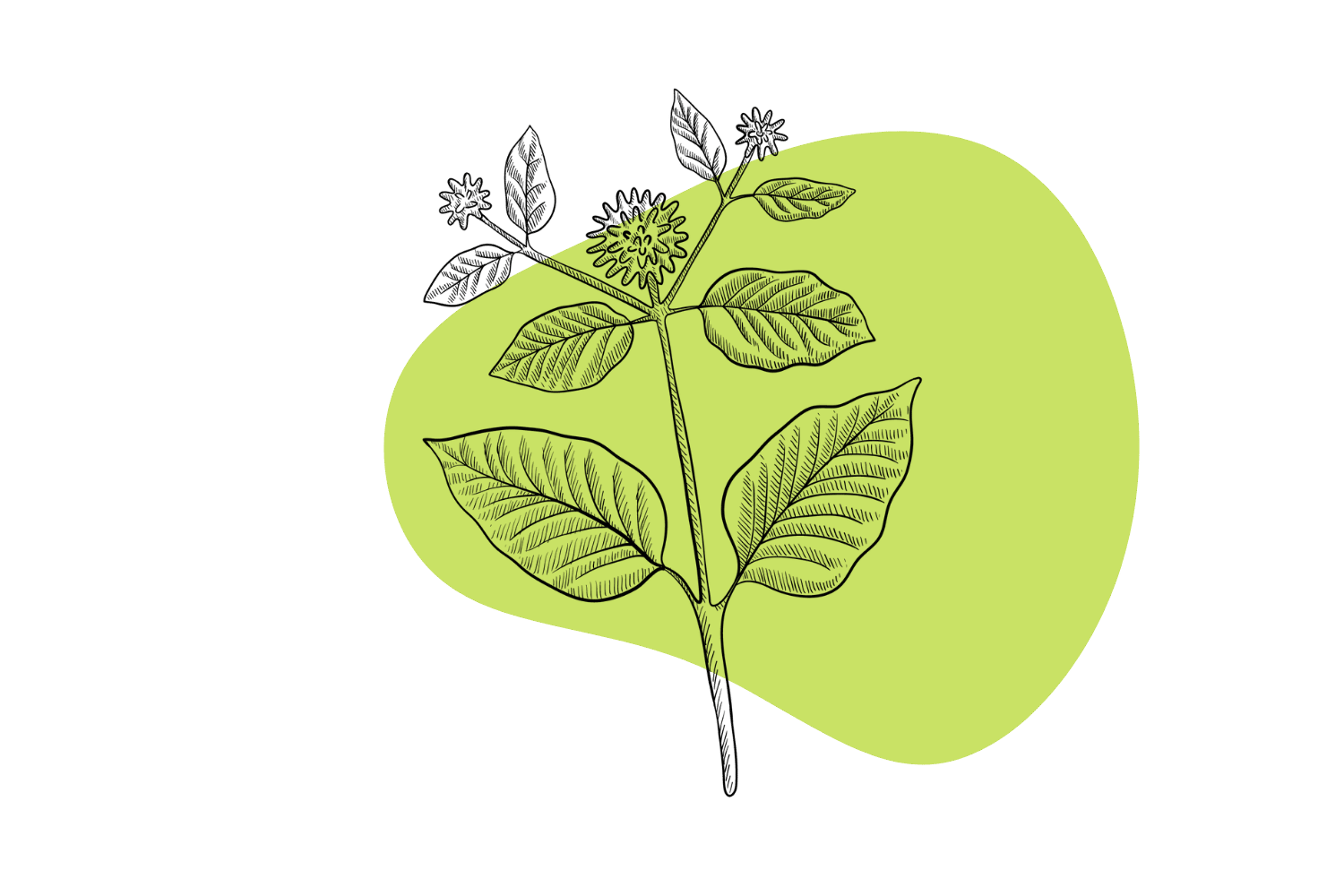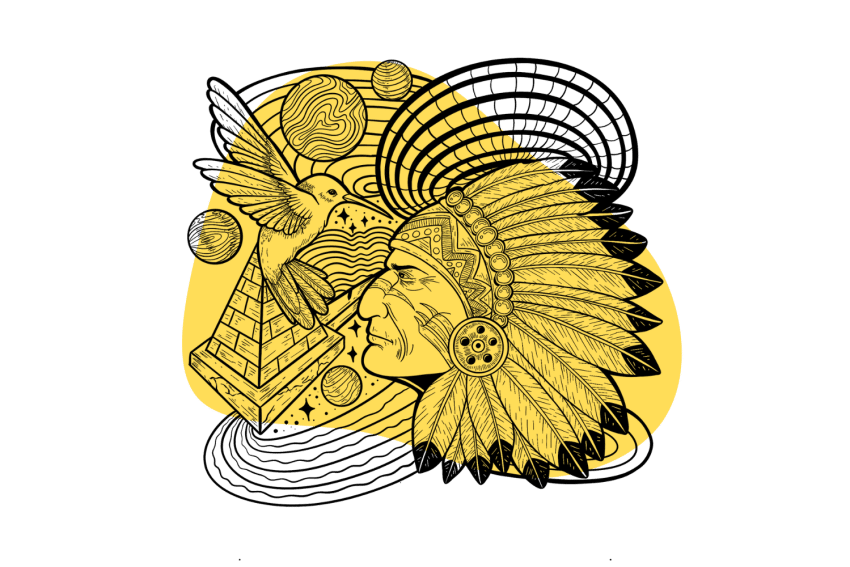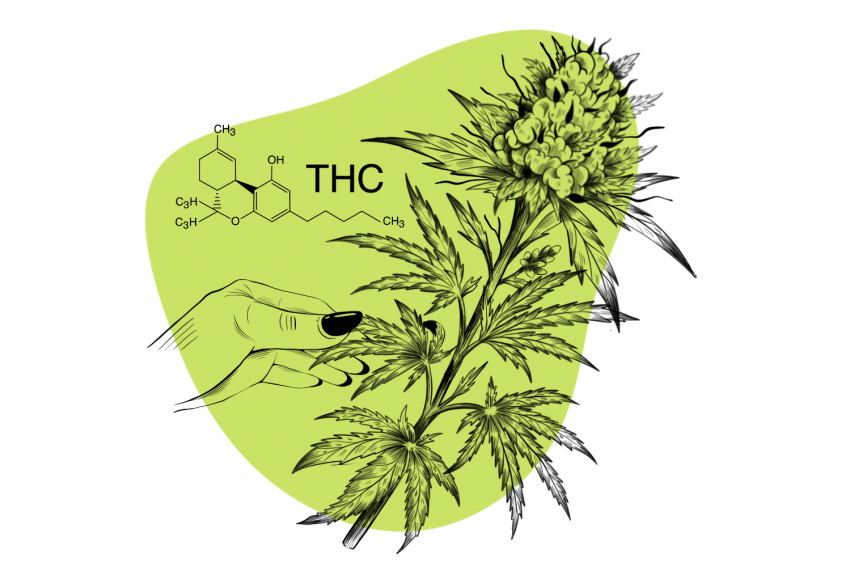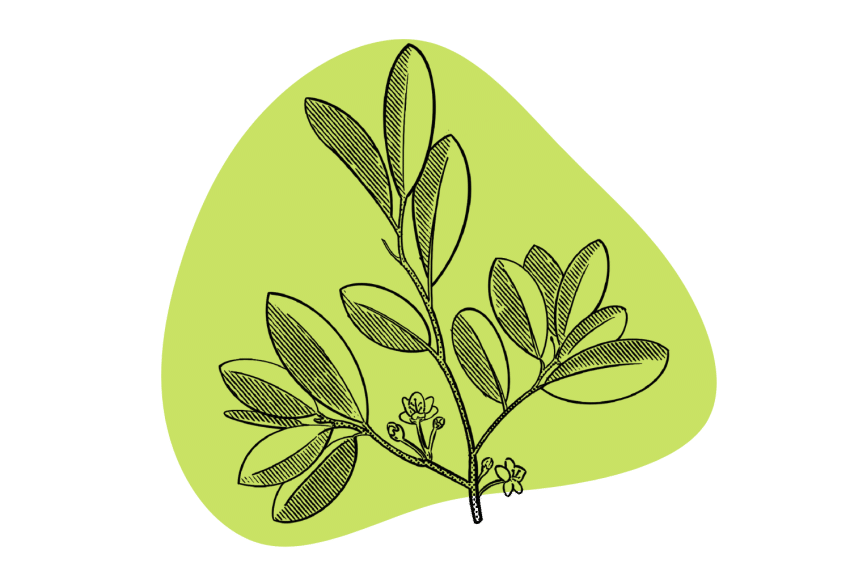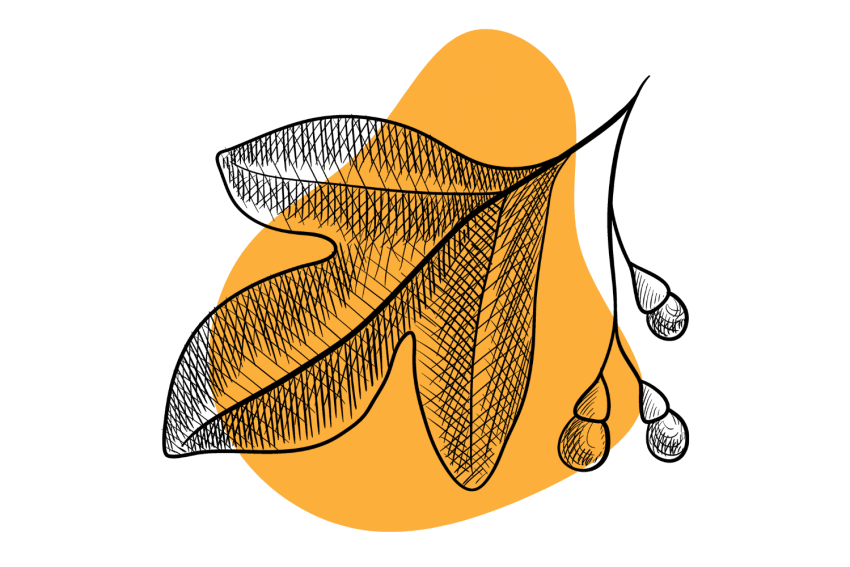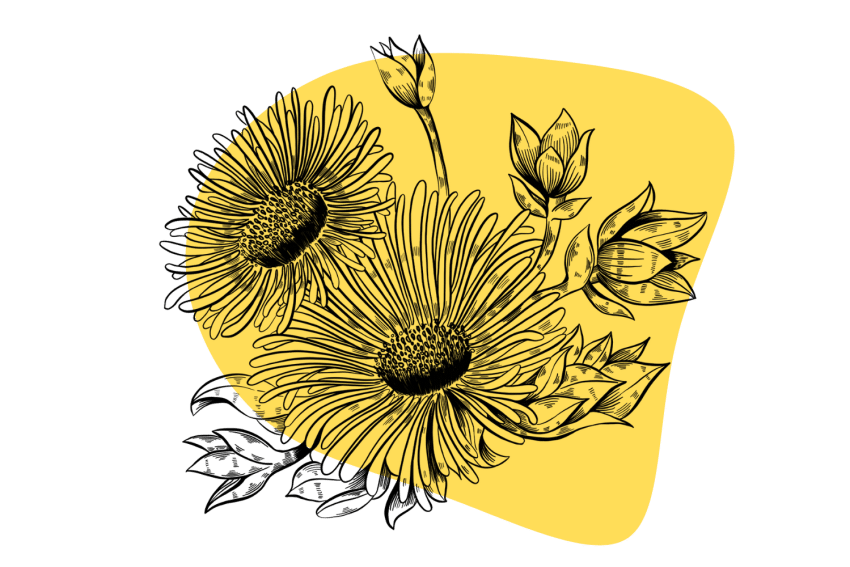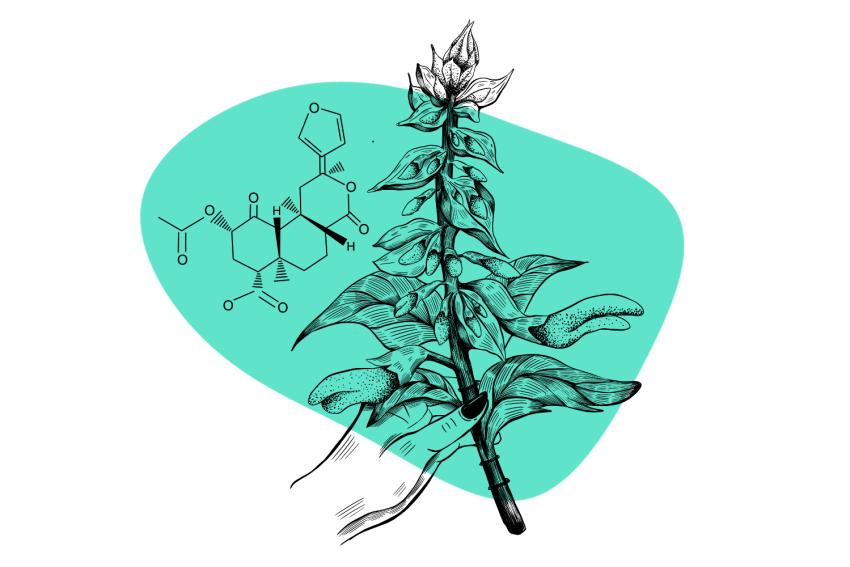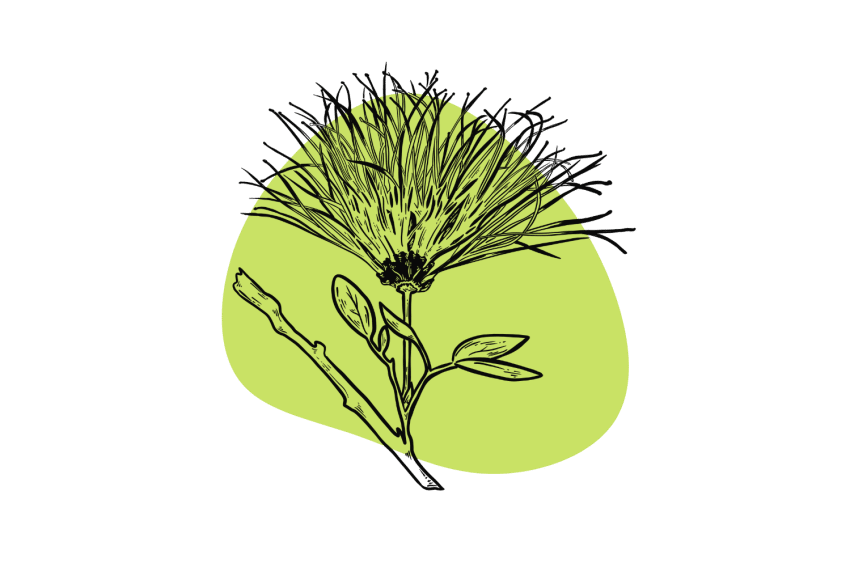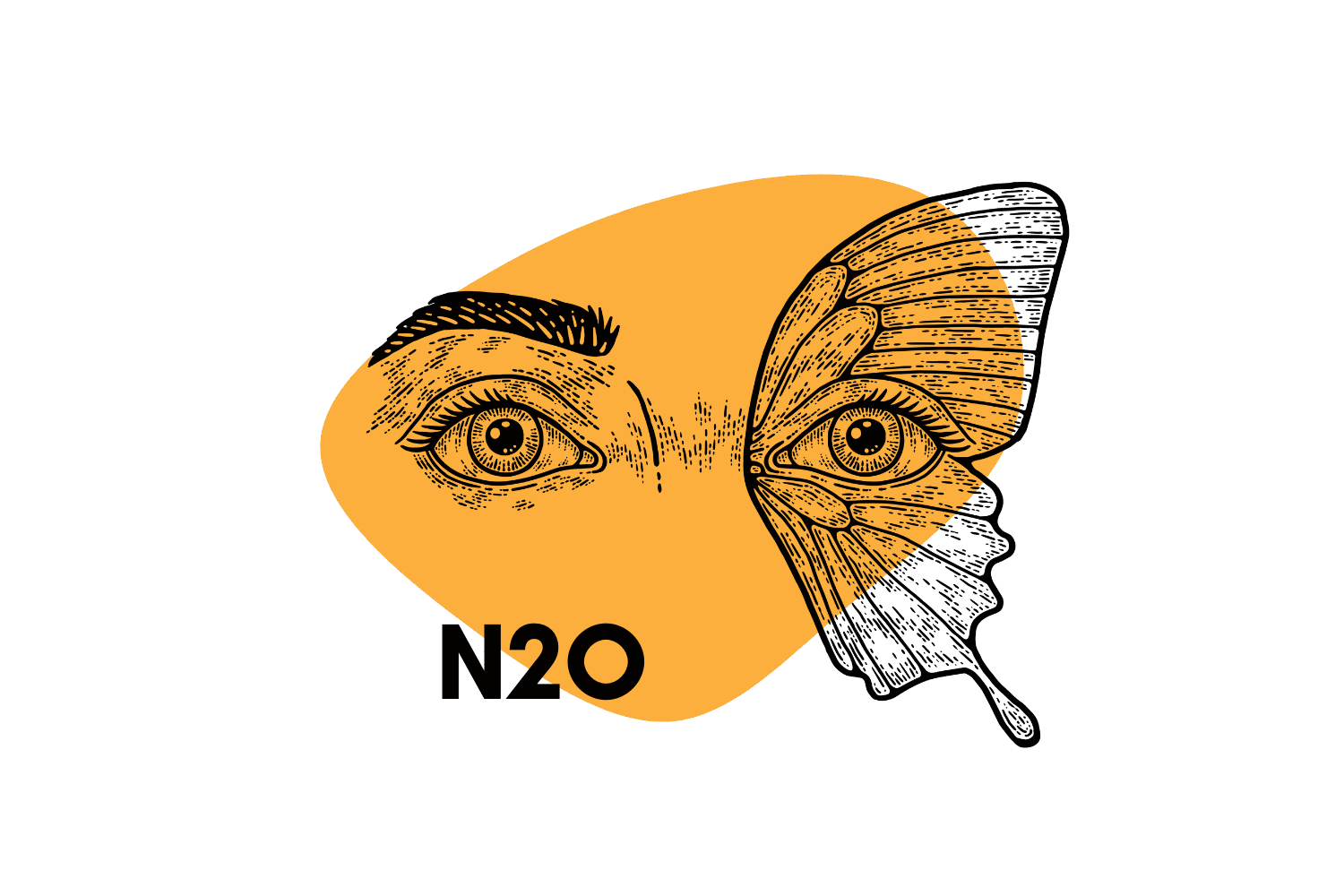LSA (Lysergic Acid Amide): Naturally-Occurring Acid With Sedative Qualities
LSA (lysergic acid amide) is a precursor to LSD — but it’s got some formidable psychedelic and oneirogenic qualities on its own too…
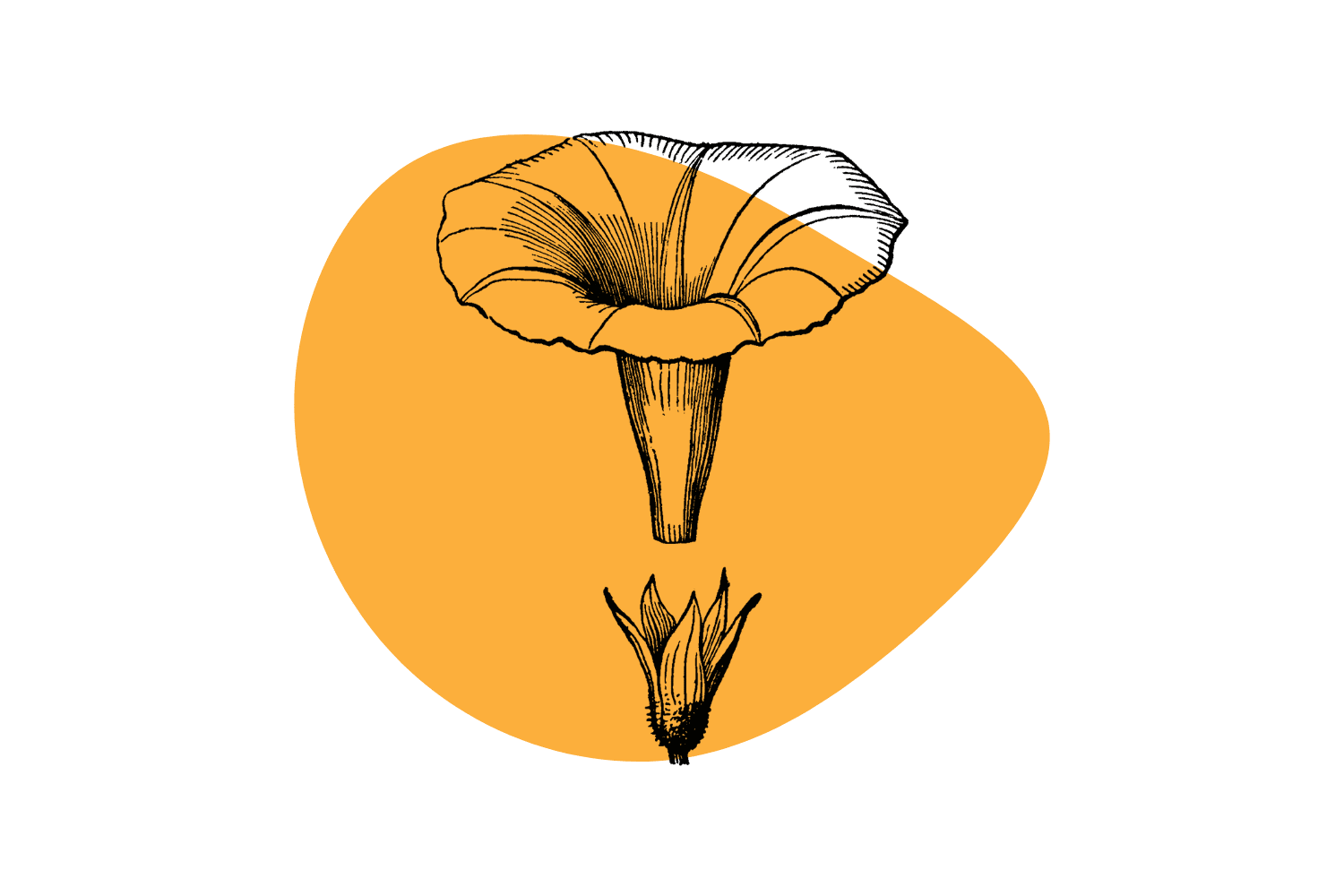
Sometimes, the most powerful psychoactive substances on Earth can be found growing right in your garden.
The morning glory vine is listed as an invasive weed throughout North America and Europe.
Inside the seeds of this common garden variety is a compound very similar to LSD by the name of LSA (lysergic acid amide)
Some people refer to LSA as a lighter, more gentle version of LSD, but this isn’t exactly accurate. In the right dose, LSA is a formidable psychedelic.
In this guide, we’ll explore everything you need to know about LSA and the plants it comes from.
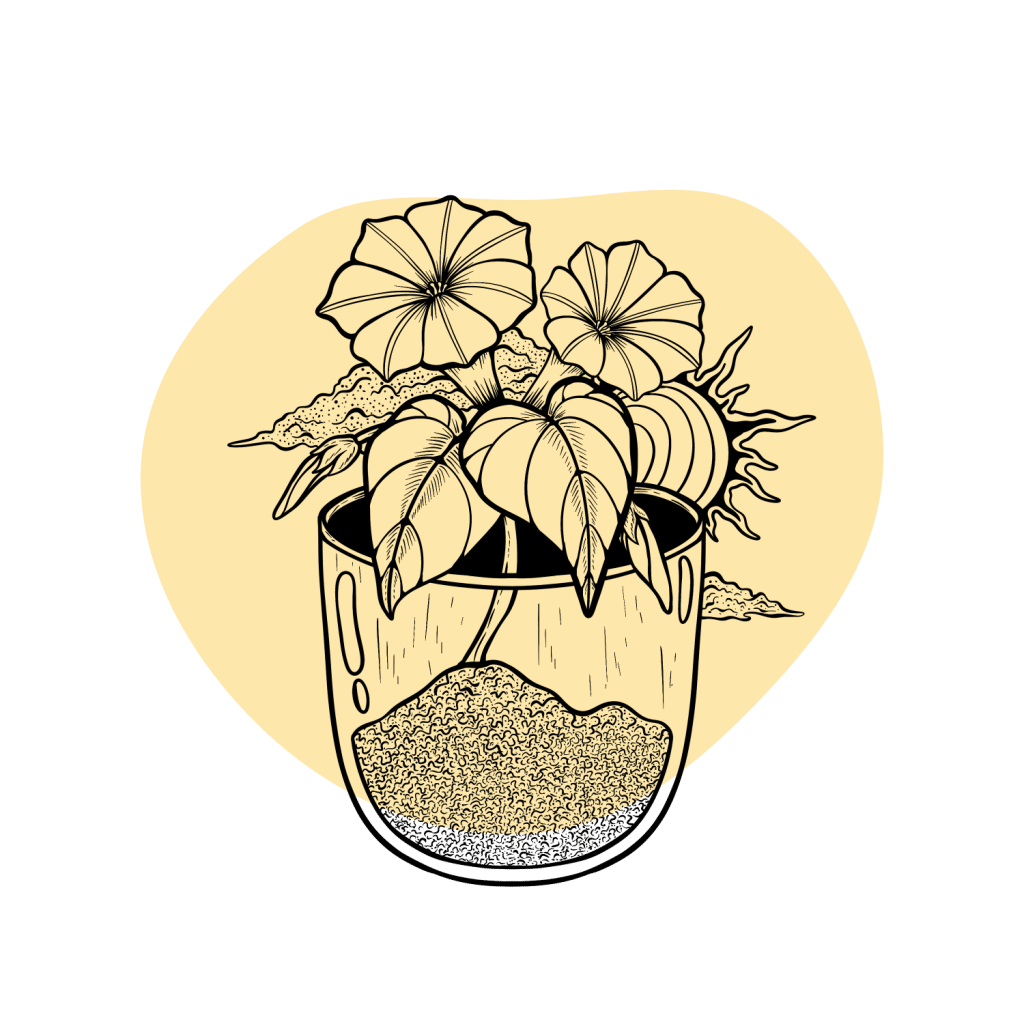
What is LSA?
LSA stands for d-lysergic acid amide. It also goes by the name of ergine.
This psychedelic compound is a close relative of LSD (lysergic acid diethylamide). It’s less potent, gram for gram, but can be profoundly psychedelic at the right dose.
Along with its hallucinogenic properties, LSA is strongly sedative — often leading users into a lucid, dreamlike visionary state at some point during their trip.
LSA is rarely used in pure form. Instead, it’s used as an extract from the seeds of two plants in the Convulaceae family — morning glory vine and Hawaiian Baby Woodrose.
There are other plants and fungi that make this alkaloid as well, but the presence of other, more toxic alkaloids make them a poor source of LSA.
Sources of LSA Include
- Morning Glory Seeds (Ipomoea violacea)
- Hawaiian Baby Woodrose Seeds (Argyreia Nervosa)
- Sleepy grass (Achnatherum robustum)
- Ergot Fungus (Claviceps purpurea)
LSA Specs & Technical Details:
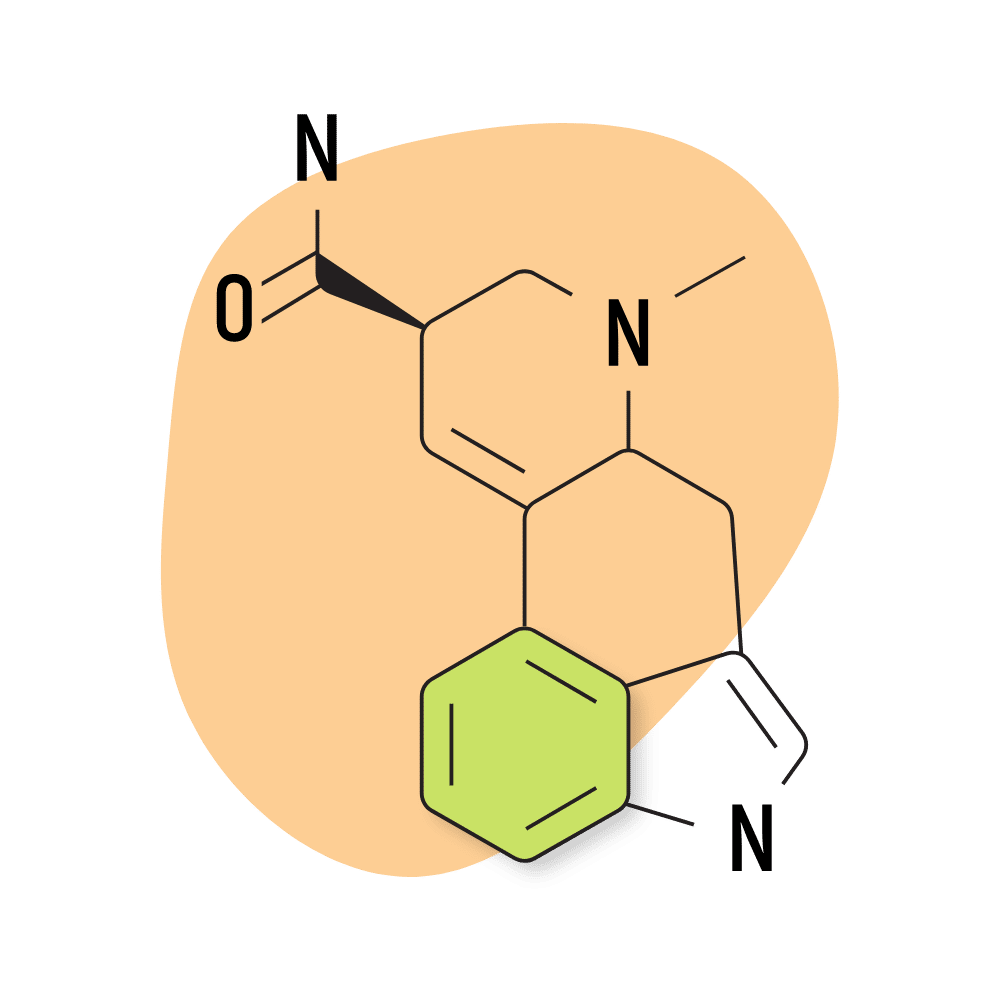
| Chemical Name | D-lysergic acid amide (Ergine) |
| Level of Risk | Low |
| Street Names | Morning Glory, HBWR, ergine |
| Most Common Side-Effects | Nausea, vomiting, limb pain, & sedation |
| Duration of Effects | 6–8 hours |
| Legality | Legal in plant form, illegal in extract form |
Trip Sitter Safe LSA Guidelines
- Learn the four pillars of responsible psychedelic use — set, setting, sitter, & substance
- Know your dose — the threshold dose for morning glory is 50 seeds and 1-2 seeds for HBWR
- Test your substances — always test your LSA with a reagent test kit before you start
- Know the timeline — the effects of LSA are going to last between 8 and 12 hours
- Have a trip sitter nearby — someone you trust who remains sober throughout the experience
- Don’t mix — it isn’t safe to mix LSA with other drugs, medications, or alcohol
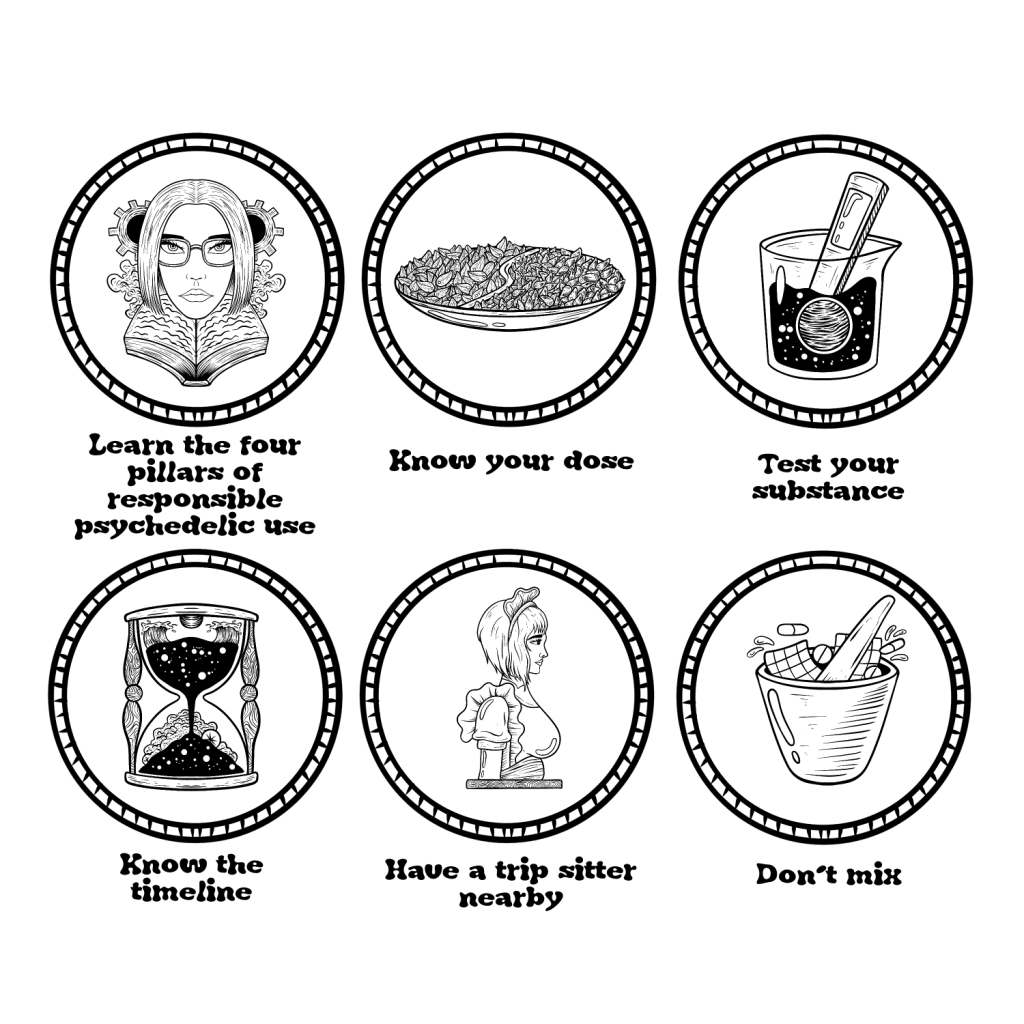
What’s The Dose of LSA?
The most common source of LSA is morning glory (MG) or Hawaiian Baby Woodrose seeds (HBWR). Both can be eaten raw or made into a tincture, and the experience is similar for both species. Some people report less sedation from HBWR and less nausea with morning glory.
The threshold dose for morning glory seeds is around 50 seeds (~1.2 grams). A strong, psychedelic dose is around 400 seeds (~10 grams).
HBWR seeds are larger and more potent than morning glory. A threshold dose is just 1 or 2 seeds, with powerful psychedelic effects at doses over 10 seeds.
It’s difficult to assess the exact dose of LSA because the LSA content of HBWR and morning glory can vary significantly. Growing conditions, age of the plant, and method of extraction can all affect the potency of the seeds.
Additionally, the size of the seeds can vary a lot. A dose of 5 small HBWR seeds is going to be quite different than taking 5 large seeds.
This is why it’s better to measure the dose in weight whenever possible instead.
Morning Glory Seed Dose
A single morning glory seed weighs about 25 mg on average, and each seed contains roughly 10 mcg of LSA.
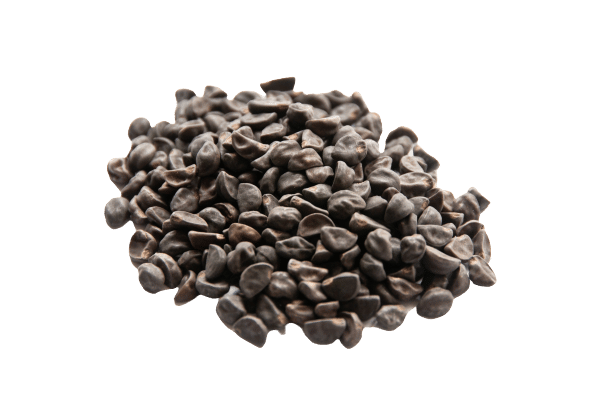
The doses of morning glory include:
| Dosage Strength | Number of Seeds | Weight of Seeds | Approximate Dose of LSA |
| Microdose | 10 Seeds | 250 mg | 100 mcg LSA |
| Threshold Dose | 50 Seeds | 1.2 g | 500 mcg LSA |
| Standard Psychoactive Dose | 100 Seeds | 2.5 g | 1 mg LSA |
| Heavy Dose | 300 Seeds | 7.5 g | 3 mg LSA |
Hawaiian Baby Woodrose Seed Dose
Hawaiian Baby Woodrose seeds are much larger and more potent than morning glory. The threshold dose has been reported to be as low as a single seed — however, the potency of the seeds can vary a lot. The average seed contains approximately 0.13% LSA of the dried seed weight.
The average HBWR seed weighs about 80 mg each.
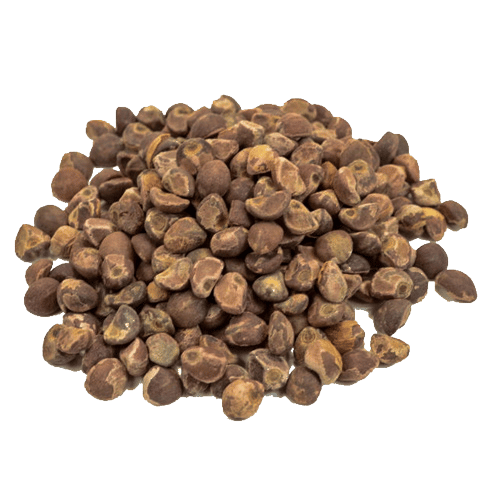
The dose of Hawaiian baby Woodrose seeds includes:
| Dosage Strength | Number of Seeds | Weight of Seeds | Approximate Dose of LSA |
| Microdose | 1 Seed | 80 mg | 100 µg |
| Threshold Dose | 3 Seeds | 240 mg | 300 µg |
| Standard Psychoactive Dose | 8 Seeds | 640 mg | 830 µg |
| Heavy Dose | 12 Seeds | 960 mg | 1.2 mg |
Note that the total LSA content of Hawaiian Baby Woodrose seeds is lower than morning glory at each dose range.
These figures are approximated to provide some context for the dose of LSA, but there are other factors involved. Both morning glory and Hawaiian Baby Woodrose contain a variety of other alkaloids as well — each one providing additional effects.
Do not attempt to match the dose of LSA from HBWR to that or morning glory; these seeds are very powerful. Most people who have taken more than 10 seeds report powerful, often out-of-body experiences from the plant. This is something that can be very uncomfortable if you aren’t ready for it.
Taking too much isn’t going to kill you, but it may induce a trip that’s much more than you’re bargaining for. Additionally, higher doses can make people feel nauseous or lethargic.
Microdosing LSA
Microdosing involves taking small, sub-perceptual doses of a psychedelic substance. Many people choose to microdose LSA for its nervine, anxiolytic, and anti-migraine effects. None of this has been proved in medical research, but there’s a lot of positive anecdotal evidence from people who have tried it.
A microdose of LSA from morning glory is about 10 seeds (250 mg). The easiest way to do this is to simply eat the 10 seeds directly, but many people like to make a tincture first and take that instead. If you’re using our 1:5 ratio tincture highlighted later in this article — the dose would be around 1 mL of tincture (equivalent to roughly 10 seeds).
It’s difficult to microdose HBWR because of how strong and large the seeds are. One seed may exceed the psychedelic threshold for some people, so people who use this plant for microdoses usually make a tincture instead. You can also split the seed in half, but it’s difficult to get a clean split as the seed tends to explode when you try to cut it.
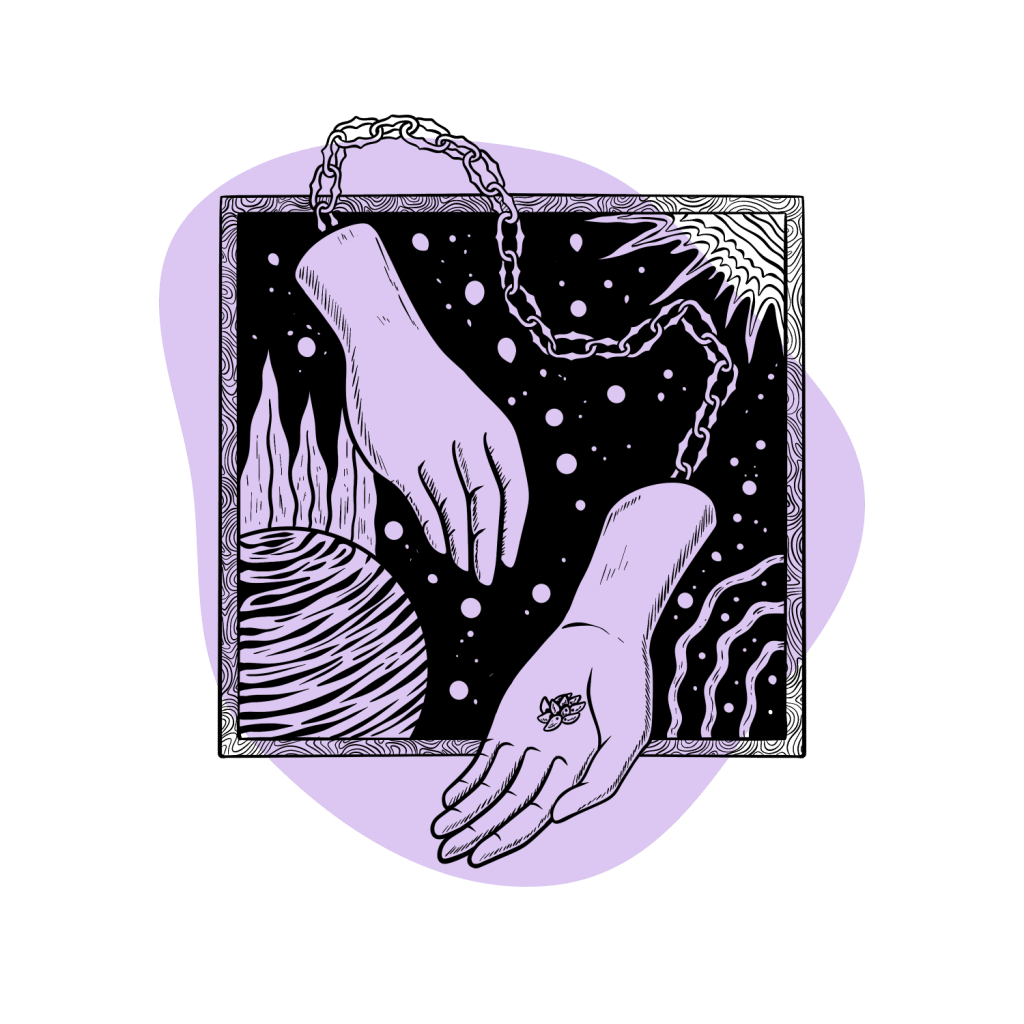
What Does LSA Feel Like?
The effects of LSA are very lucid — producing dreamlike visions, sedation, and a relaxed state of mind. Most people who use LSA report the experience was enjoyable and mellow. It’s a very “chill” psychedelic overall — but only when used at or below what we consider the “standard psychoactive dose” — which is around 8 HBWR seeds or 100 morning glory seeds.
High doses of LSA are very similar to LSD and can be unexpectedly powerful — producing intense visions, ego-death, and out-of-body experiences. The visuals share similarities to LSD and magic mushrooms but have a unique characteristic to them as well. LSA visuals usually involve haziness or fuzziness, light streaks, and trail lines.
LSA also has a stronger body load than many other psychedelics.
Body load refers to the effects of a psychedelic substance on the body. It can make the limbs feel heavy or numb, and sometimes produces feelings of fullness or pressure in the abdomen during the come-up, which can be very uncomfortable. It’s common for people to feel nauseous for the first 1–2 hours after taking LSA-containing seeds.
How Long Does LSA Last?
LSA can take up to two hours to start taking effect and lasts up to 6 hours once the onset begins.
The peak experience is usually felt about 3 hours after taking the seeds and will last around 2 hours before gradually fading out.
Some people report feeling some residual haziness or sleepiness for about 1–3 days after the trip.
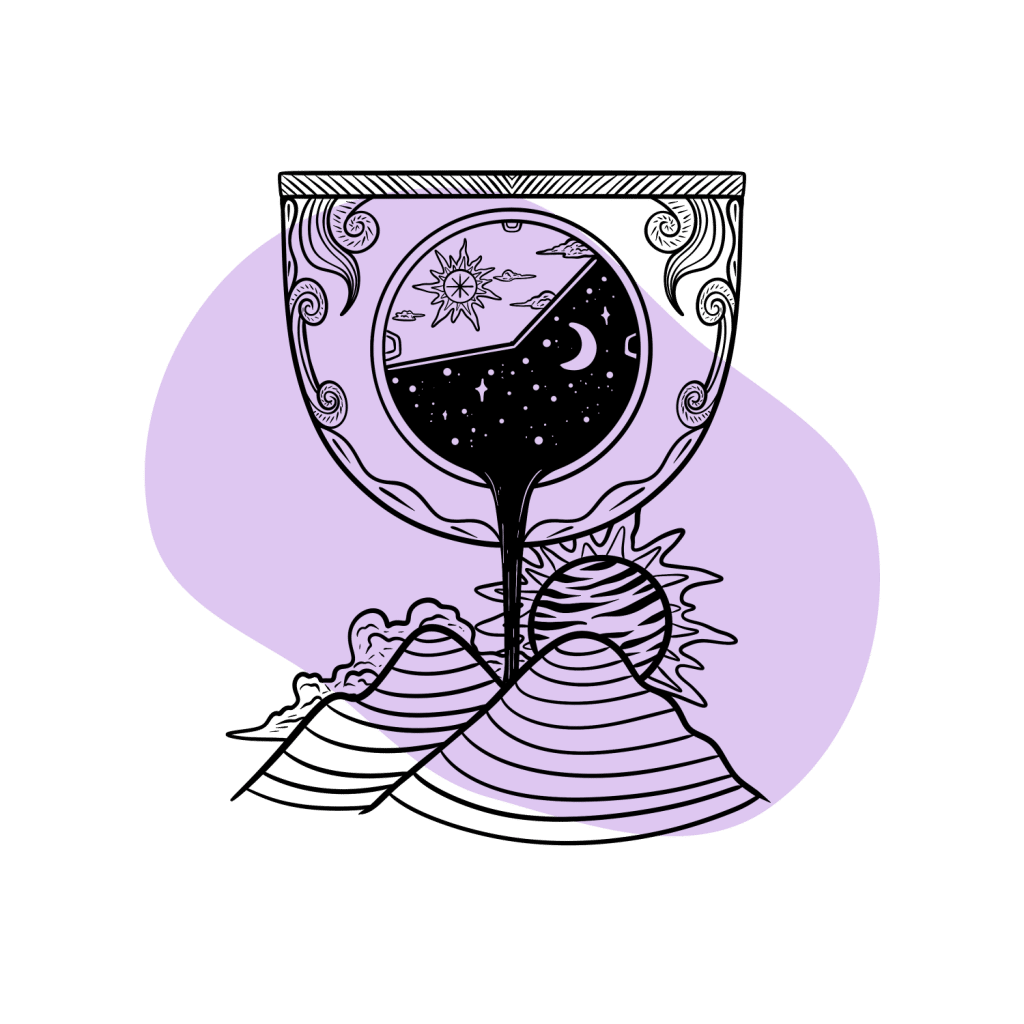
How to Take LSA
There are a few different ways to use LSA. The simplest method is to eat the seeds of the morning glory or Hawaiian Baby Woodrose plants. This works perfectly fine but increases the chances of gastrointestinal side effects.
Grinding the seeds into a powder and filling them into capsules may reduce the incidence of GI-related side effects. You can also drink a strong ginger root tea before or after taking the seeds to help prevent any nausea or stomach cramping.
I’ve found the best method is to make an LSA extraction instead (AKA LSA tincture) — which separates the LSA and other lysergamide psychedelics from the seeds but leaves behind the fibers and larger protein molecules that cause most of the issues.
How to Make an LSA Tincture From Morning Glory Seed
Making your own LSA tincture is simple and can be done with everyday household items. This method makes the seeds last longer, shortens the onset time of the trip, and reduces the chances of side effects and body load.
Caution: This is for informational purposes only. The effects of an LSA tincture made with this method can be unpredictable. The potency varies substantially from one batch to another. Without testing a sample in a lab, it’s virtually impossible to know exactly how much LSA you’re getting for each dose.
With that aside, here’s how to make your own LSA tincture at home:
What You’ll Need:
- Morning glory seeds (untreated) — opt for the “Heavenly Blue” variety
- High-proof ethanol (the higher the alcohol content, the better)
- Glass mason jars
- Coffee grinder, blender, or mortar & pestle
- Coffee filters
- A small scale
- Petroleum ether (Needs to be pure petroleum ether) — don’t confuse it with diethyl ether
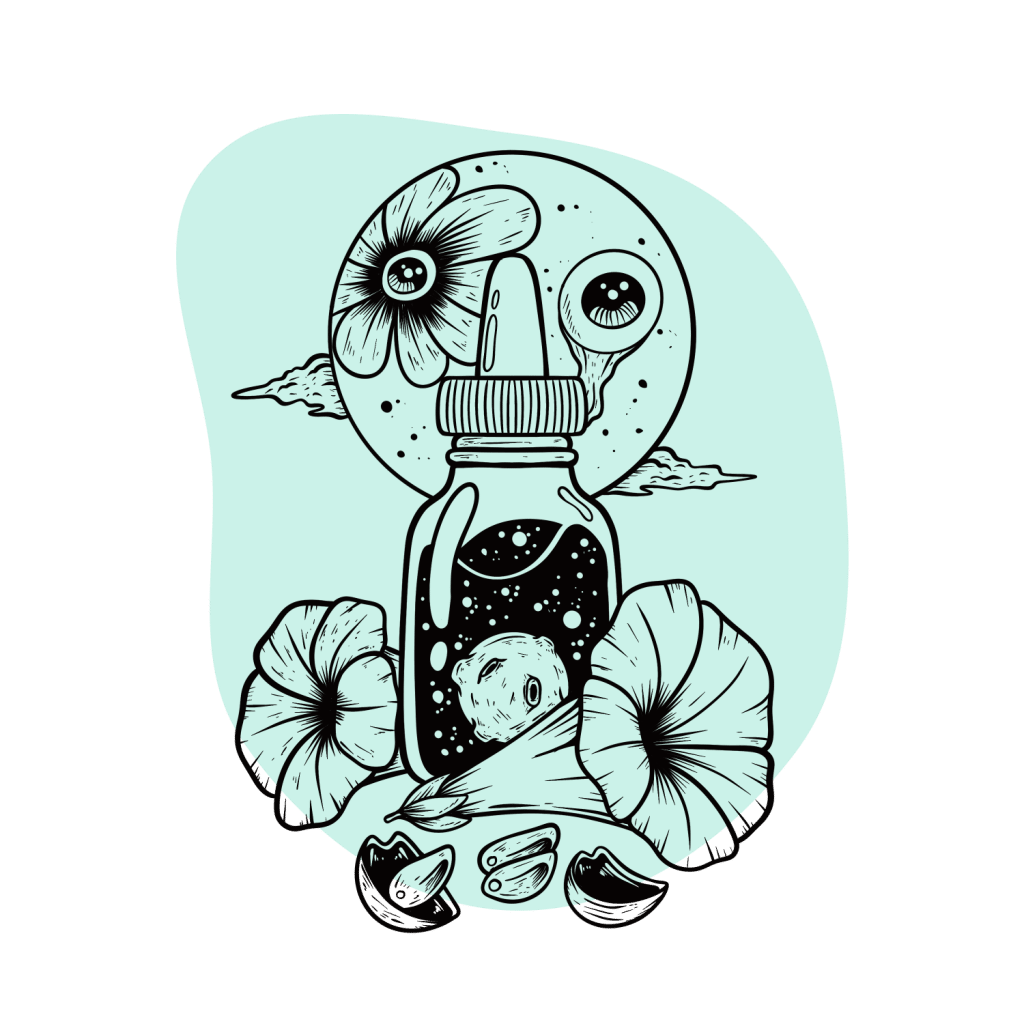
Where to Buy Morning Glory Seeds
You should never buy your morning glory seeds from a garden center to make a tincture from. Seed companies sometimes add a coating to the seed to protect it from fungal infection while it germinates. These seeds are especially prone to fungal infection, so the antifungal helps the germination rate. However, fungicide is toxic, and you really don’t want it to end up in your tincture.
Look for seeds from places like Shaman Garden that don’t treat their seeds.
You can also grow your own morning glory from a few seeds to harvest yourself (it’s very easy).
It’s also possible to wash the fungicide coating off the seeds, but considering you need about 500 morning glory seeds for a single dose, this can be extremely time-consuming.
Step 1: Weigh Out the Desired Dose of Seeds
It’s a good idea to standardize the dose of your tincture so you know exactly what dose you’re using.
I recommend you go for a simple 1:5 ratio (seeds to liquid). This means that for every 1 mL of a tincture, you’re consuming about 5 grams of seeds (equivalent to around 250 seeds). The dose of this tincture would be between 0.5 and 2 milliliters.
Here’s a chart to help you calculate the number of seeds to weigh out and how much alcohol you’ll need to add for step 3:
| Morning Glory Seed Weight | Approximate Number of Morning Glory Seeds | Amount of Petroleum Ether | Amount of Alcohol to Achieve 1:5 Ratio | Dose per mL |
| 5 grams | 250 Seeds | 250 mL | 25 mL | 200 mg (10 seeds per mL) |
| 10 grams | 500 Seeds | 500 mL | 50 mL | 200 mg (10 seeds per mL) |
| 20 grams | 1000 Seeds | 1000 mL | 100 mL | 200 mg (10 seeds per mL) |
| 50 grams | 2500 Seeds | 2500 mL | 250 mL | 200 mg (10 seeds per mL) |
Step 2: Grind The Seeds Into a Powder
You’ll want to grind your seeds into a fine powder to increase the surface area and get a more efficient extraction.
A coffee grinder works great for this, but you can also use a blender, mortar and pestle, or empty pepper grinder. The finer the grind, the better.
Step 3: Wash The Seeds With Petroleum Ether
There are two phases to the extraction — first, a nonpolar solvent such as petroleum ether, and later a polar solvent such as ethanol.
The nonpolar wash with petroleum ether will remove a lot of the compounds we don’t want in the extract, which will dramatically reduce side effects.
Petroleum ether is toxic but has a very low evaporation rate, so it’s easy to remove from the seeds without the need for high-tech lab equipment. It’s also relatively easy to find pure petroleum ether from hardware stores (sometimes called naphtha).
Don’t confuse this with diethyl ether, and don’t buy any products that contain additional ingredients.
Add the powdered seeds to a jar and pour in the petroleum ether. Give the jar a really good shake and let it sit for an hour or two.
Step 4: Evaporate the Petroleum Ether
Now it’s time to remove the ether. To do this, pour the seed/ether mix through a coffee filter. You can discard the ether or save it to use again for a future batch (up to four times max). The powdered seeds will still be wet with petroleum ether, so you’ll need to let it evaporate before moving on to the next step.
Spread the powdered seeds over a flat surface in an area with good airflow to let the ether evaporate on its own. It’s a good idea to let this sit here for a couple of days to make sure all the ether has evaporated before moving on to the next step.
Your seed powder should be completely dry and have no aroma before moving on to the next step.
Step 5: Extract the LSA With Ethanol
Now that the nonpolar wash is complete, it’s time to do the polar extract with ethanol. This is the part you’re going to keep.
Using the same technique, add the seed powder to a clean jar and pour in the alcohol. You’ll want to let this sit for a couple more days to make sure as much of the LSA is extracted as possible.
Once it’s ready, pour the mixture through a coffee filter again. This time, keep the liquid and discard the seed shells and coffee filter.
If you used the ratios above, a dose between 30 and 40 milliliters should be enough for a potent dose of LSA.
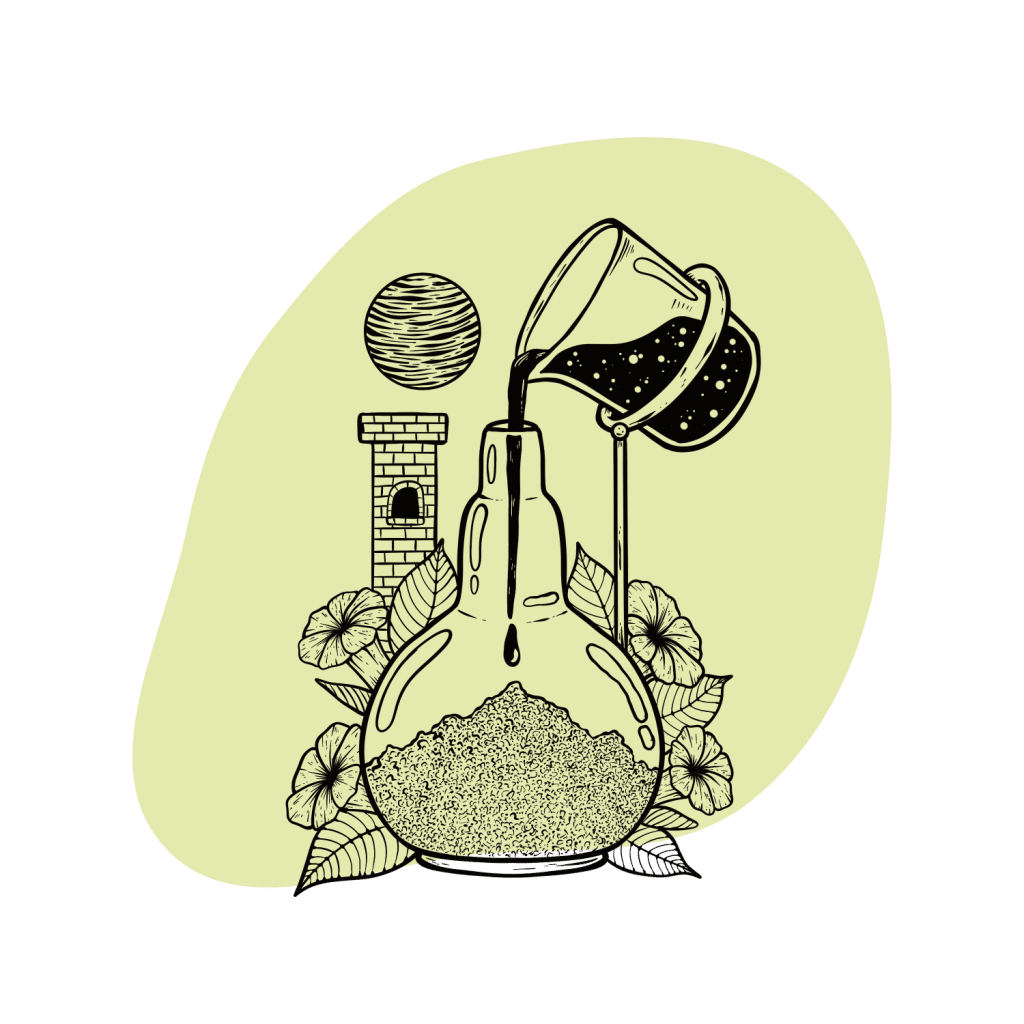
How to Make Cold a Water LSA Extraction From Morning Glory
This is another method of extracting the LSA that doesn’t involve the use of alcohol or petroleum ether. It’s much more mellow than the tincture method — producing effects comparable to alcohol or marijuana. It’s much less psychedelic than eating the raw seeds or taking a tincture.
What You’ll Need:
- Distilled water
- Fridge
- Teabags or coffee filters
- Glass jar
- Coffee grinder or mortar & pestle
Step 1: Weigh Out The Seeds
The standard dose of morning glory is around 100 seeds, but you could use more if you wanted as well.
You can count the seeds individually or weigh out 2.5 grams of the seeds using a small scale.
Make sure the seeds you’re using have been untreated (it should say on the package). You can also use your fingernail to scrape the surface of the seed. If it scrapes away easily to expose another color beneath the seed, your seeds have most likely been treated and should be avoided.
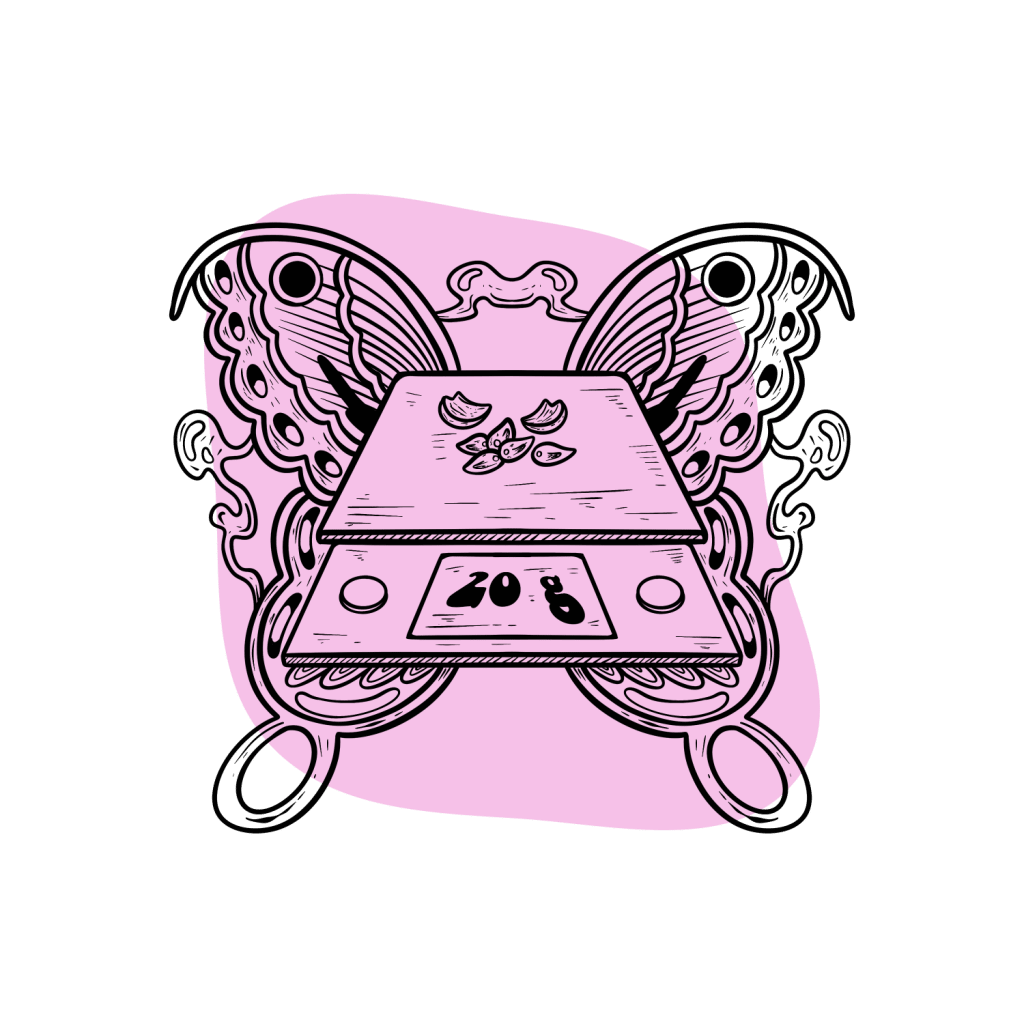
Step 2: Grind the Seeds To A Powder
Using your coffee grinder or a mortar and pestle, grind the seeds into a fine powder. The finer the better.
Step 3: Fill Your Teabags With The Powder
The next step is to place the powder into the teabags. If you’re using a coffee filter instead, make sure to seal the filter, so the powder doesn’t fall out during the next step.
Step 4: Steep The Seeds in Cold Water
Fill a jar with about 250 mL (1 cup) of distilled water. Add the tea bag to the jar and place the whole thing in the fridge for 3 hours.
Now your extract is complete — you can remove the teabag and drink the water. Don’t drink the whole thing, take about a quarter, wait 30 minutes, then take another quarter, wait 30 minutes, and so on.
Traditional Uses of Morning Glory & Hawaiian Baby Woodrose
Morning glory, Hawaiian Baby Woodrose, and other sources of LSA have a long history of use in traditional medicine and folklore.
Mesoamerican cultures used morning glory seed as an entheogen for shamanic healing. It was used as a way to bridge the gap between the living and the dead and to receive information from the gods. Early mesoamerican cultures such as the Aztecs or Mayans believed the spirit of morning glory was particularly advanced and could connect them with the underworld.
The practice of consuming morning glory for its psychedelic effect was first mentioned by a famous ethnobotanist in 1941 by the name of Richard Schultes. Shortly after, Albert Hoffman, the inventor of LSD, received a sample of Mexican morning glory, which he used to identify and synthesize LSA.
Another famous chemist in the psychedelic space, Alexander Shulgin, also took the liberty of synthesizing this molecule. Shulgin is considered one of the most prolific explorers of psychoactive substances to have ever lived. He documented his experiments with LSA in his book TIHKAL. In his book, he states that LSA produced a “tired, dreamy state.”
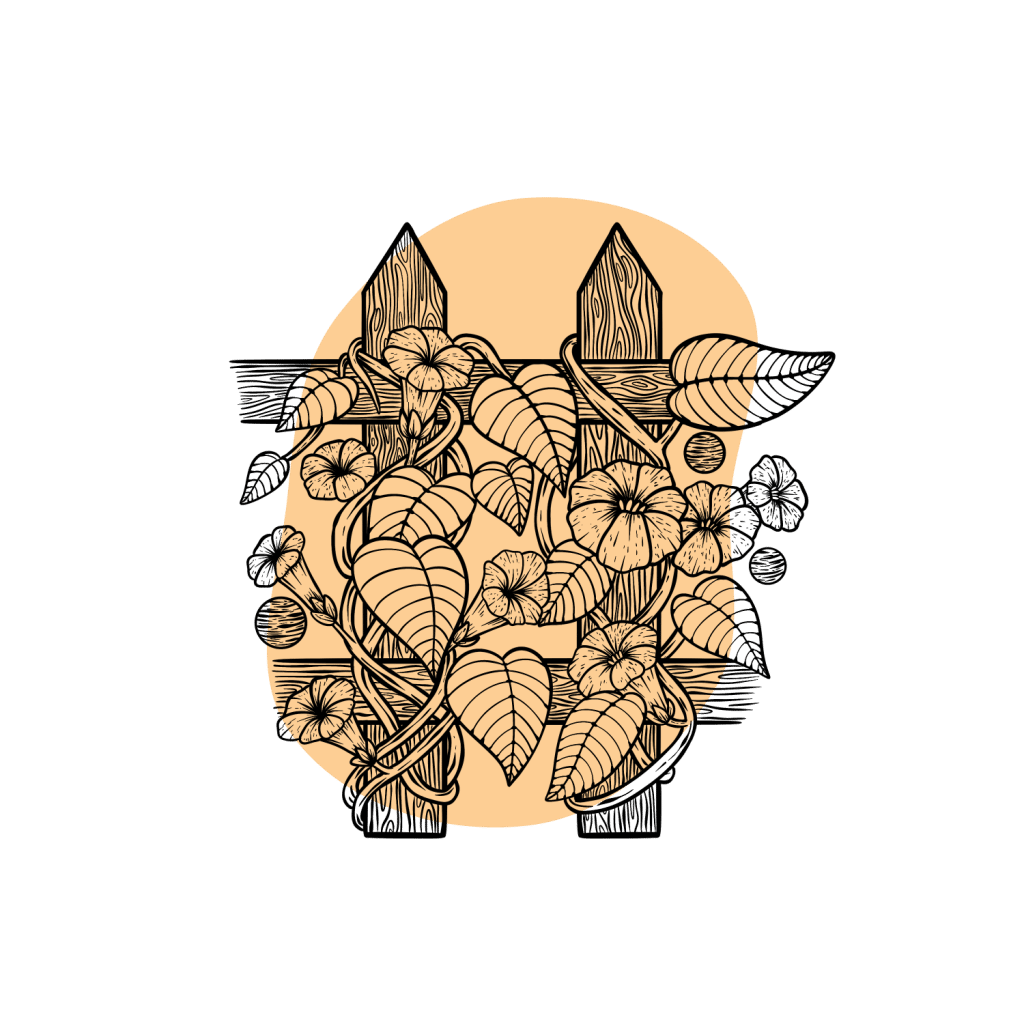
How Strong is LSA Compared To Other Psychedelics?
LSA is very strong compared to most psychedelics. The threshold dose is roughly half a milligram, with very strong psychedelic out-of-body experiences reported around the 2 mg mark.
In terms of its subjective effects, LSA has gotten a name for itself as a “milder psychedelic” — but this isn’t exactly accurate.
In lower doses, it can feel mild because of its relaxing or sedative effects. It has less of a visual component and more of an introspective and body profile.
However, higher doses of LSA is a formidable psychedelic experience — capable of interdimensional out-of-body hallucinations and ego-death experiences. Don’t underestimate this psychedelic, even if you’ve used it before and didn’t have a particularly profound experience. It can really creep up on you if you aren’t careful.
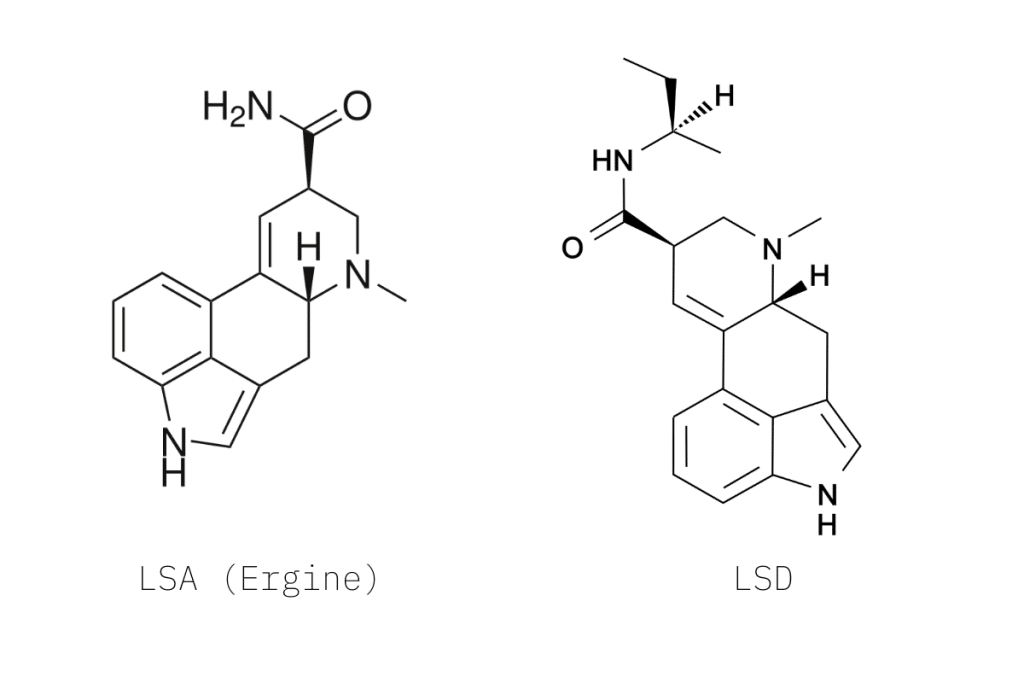
LSA vs. LSD
Compared to LSD (lysergic acid diethylamide), LSA is much weaker. You need about twice as much LSA to get the equivalent effects of LSD — but this isn’t saying much. LSD is a powerful psychoactive in sub-milligram doses, and LSA isn’t far behind.
The chemical structure of LSA is very similar to LSD — which is no surprise; both substances are classified as lysergamide alkaloids. Other related lysergamides include PRO-LAD, ETH-LAD, LSZ, AL-LAD, and ALD-52.
LSD was first synthesized by Albert Hofmann from alkaloids obtained in the fungus known as ergot — which also contains high concentrations of LSA.
Due to the similarities in chemical structure, the effects of LSA are comparable to that of LSD.
The main difference between the two is that LSA is also a strong sedative. LSD isn’t directly stimulating but tends to produce euphoria or other energizing effects. LSA is much more likely to make you feel tired or even fall asleep. The high is considered very dreamlike or lucid in nature.
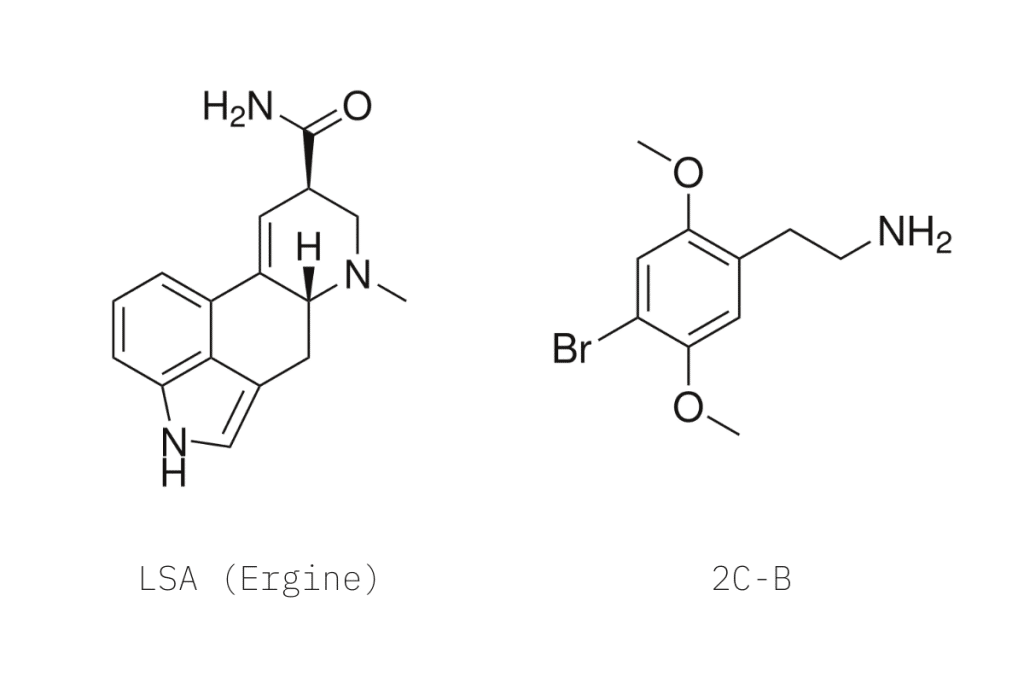
LSA vs. 2C-B
2C-B is a synthetic phenethylamine derived from the naturally occurring psychedelic known as mescaline. It was one of Alexander Shulgin’s most famous inventions — often described as a combination of LSD and MDMA.
LSA shares some similarities with 2C-B in the higher dose range. 2C-B is stimulating in lower doses (which makes it popular in the club scene), while LSA is much more sedative or relaxing.
Both of these substances become powerfully psychedelic in the higher dose ranges.
2C-B is more of an outwardly empathogenic substance, while LSA is more of an inwardly and introspective substance.
Is LSA Safe?
Like many other natural psychedelics, there’s no known toxic dose of LSA. However, in higher doses, it can be fairly challenging from a psychological perspective — just like any other psychedelic.
Additionally, LSA in the form of morning glory and Hawaiian Baby Woodrose often cause uncomfortable side effects as the effect starts to appear.
It’s very common for people who eat the seeds raw to feel nauseous — sometimes, these symptoms can be very severe. These effects are caused by a combination of the rich fibrous consistency of the seeds and some of the other lysergamide alkaloids contained within them.
While nobody has died from an overdose or become addicted to LSA, it can cause out-of-body experiences, which can be dangerous if a trip sitter isn’t nearby. The risk of accidental injury when this happens is very high, so it’s wise to have a sober and responsible trip sitter around for the entire duration of the trip — especially if you’re going to use more than about 100 seeds of morning glory or 6 seeds of Hawaiian Baby Woodrose.
What Are The Side Effects of LSA?
- Bloating or abdominal discomfort
- Confusion & irritability
- Dilated pupils
- Dizziness
- Increased blood pressure
- Loss muscle coordination
- Nausea
- Sedation & lethargy
- Sweating
- Tingling sensation in the limbs
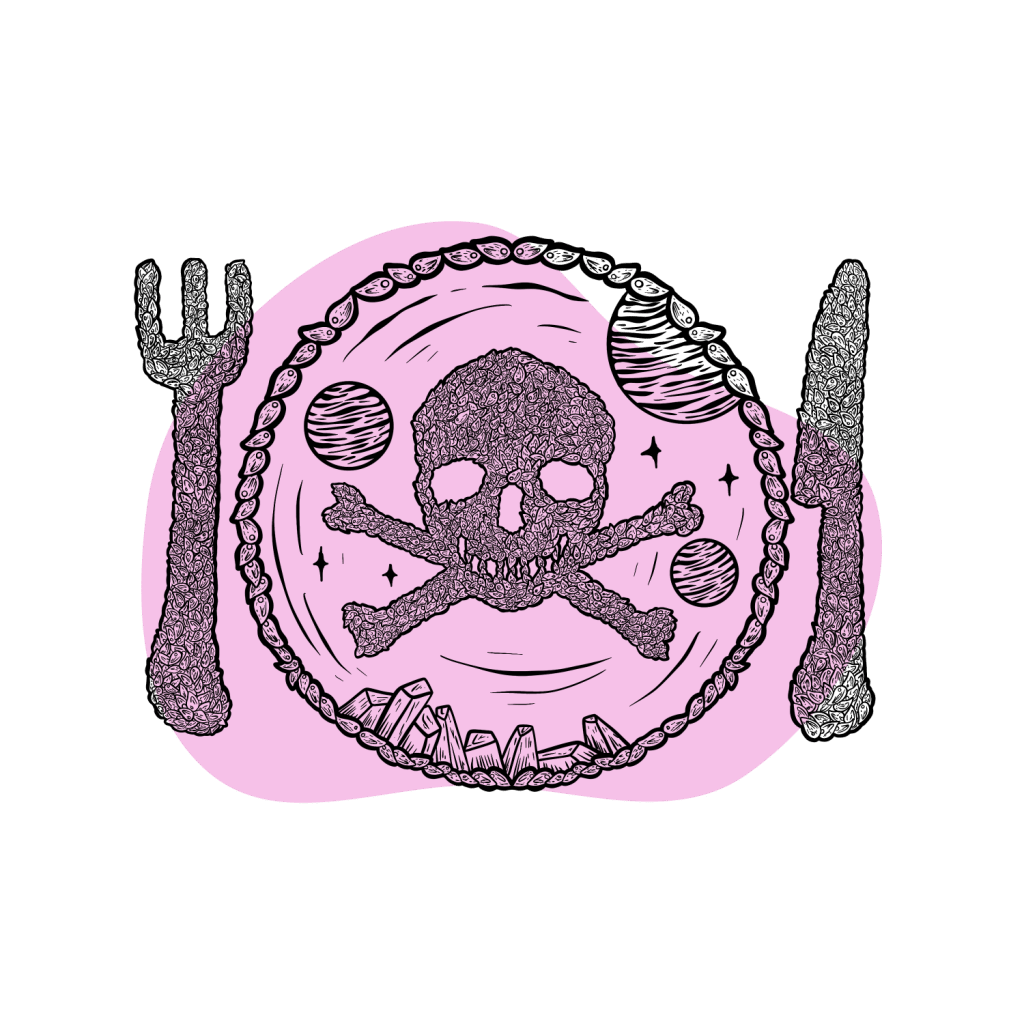
LSA Adulteration & Contamination
LSA itself isn’t dangerous, but there are a number of ways contaminants or adulterants can find their way onto the seeds or seed extracts — some of which bring an additional risk of side effects.
Morning Glory Seeds May Be Coated In Chemicals
Morning glory is a popular garden variety. Many seed companies coat their morning glory seeds with an antifungal coating to help the seed sprout — and some even coat it with a substance designed to make you nauseous to prevent people from eating them.
You should always source your morning glory from a company that clearly states their seeds are untreated — or better yet, grow your own! Morning glory is considered an invasive weed in most parts of the world — which indicates how easy this plant is to grow at home.
LSA Tinctures May Contain Solvents
Buying or making LSA tinctures can also bring some risks. Harsh solvents like petroleum ether are necessary to perform the extraction. While the process of removing this compound is very simple (passive evaporation), if you or the person making the tincture is impatient and moves on to the next step before all the ether is gone, it can contaminate the final product and make you very sick.
LSA tinctures may also contain other contaminants or adulterants that unethical manufacturers have added to give it a more “desirable” effect. This could be anything, but the more dangerous additives include other plants like datura, henbane, or mandrake. Some people will add chemicals to “boost” the effects as well, which might involve dangerous psychedelics like NBOMes or high doses of LSD.
LSA Drug Interactions
You should never combine LSA with other medications or psychedelics. The reactions between this substance and prescription medications are not well known.
The most common side effects of this substance are digestive upset and sedation — so medications that are most likely to lead to a negative interaction include sedatives, blood pressure medications, heart medications, proton pump inhibitors, painkillers, or anti-inflammatories.
While there is some ethanol in an LSA tincture, it’s not wise to take more than about 1–2 ounces of alcohol alongside LSA. Alcohol can make symptoms of nausea worse, weaken the body’s ability to metabolize LSA and other alkaloids, and can lead to side effects like dizziness or fainting.
Is LSA Addictive?
There is no indication in any of the medical literature, user reports, or elsewhere to suggest that LSA is in any way addictive.
This is a common finding with most psychedelics.
In fact, there are numerous reports of people who have taken LSA and experienced a widespread reduction or even elimination of addictive tendencies. Some people have reported that they immediately lost the desire to smoke, use other drugs, or partake in other compulsive behaviors like gambling after an LSA trip.
While more research is needed to explore whether this phenomenon is reproducible, it’s not surprising when you consider how many other psychedelics are used officially to treat addiction to both substances and behaviors.
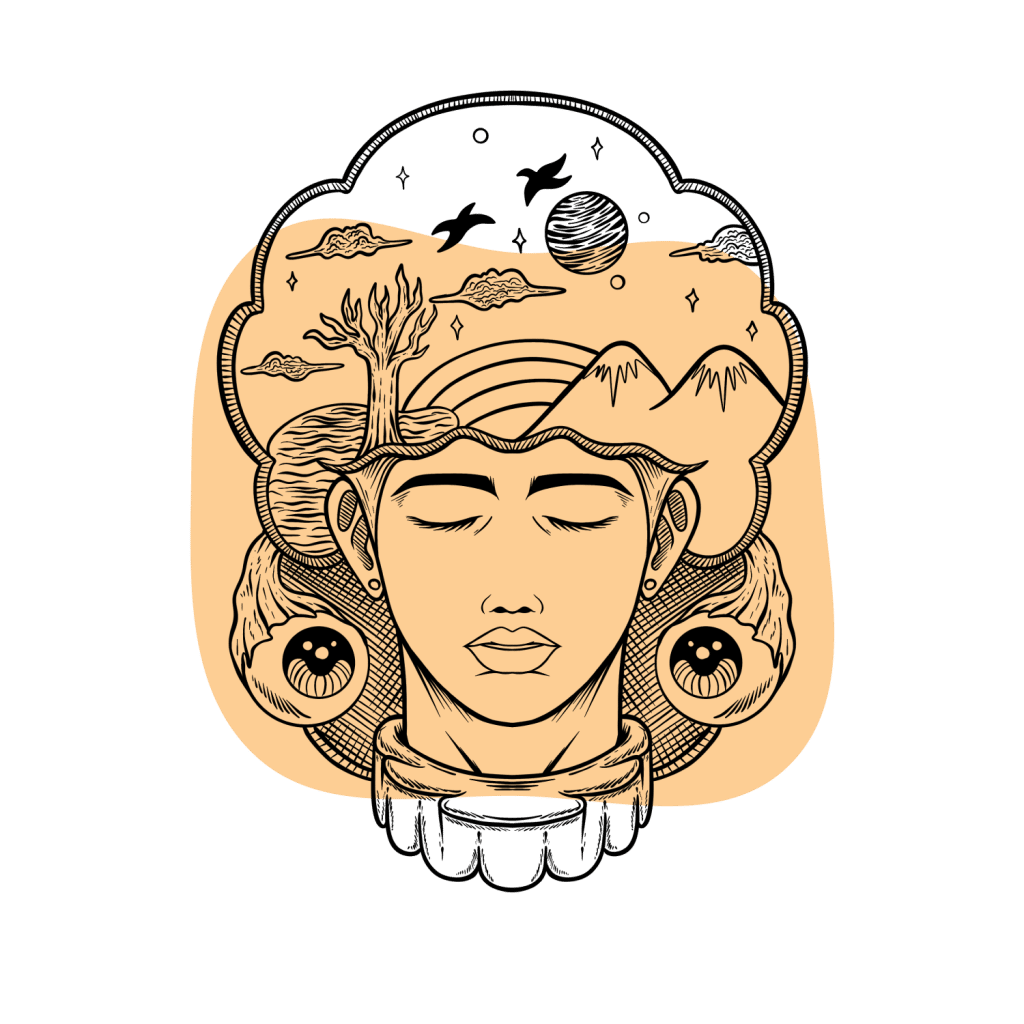
Does LSA Cause a Hangover?
According to the feedback we’ve received in our ongoing psychedelic survey, roughly 12% of the 183 people who reported using LSA say they had a “hangover” for a day or two after using LSA.
The hangover primarily involves a feeling of tiredness or fatigue. Usually, this only affects the body rather than the mind — meaning you feel tired and lethargic without the mental fogginess or confusion involved with other hangovers.
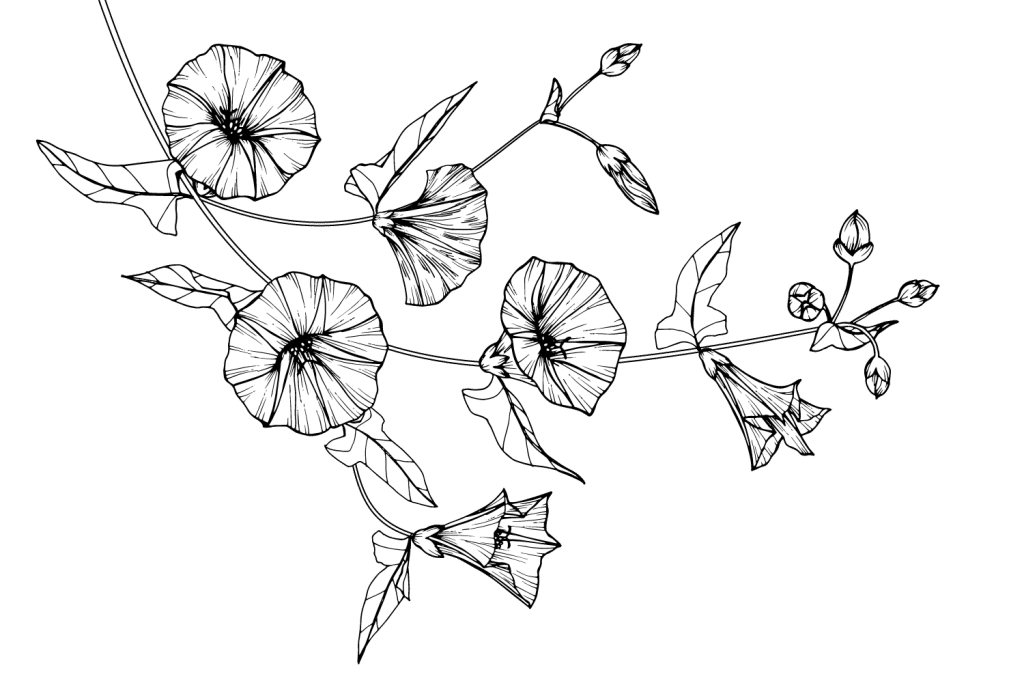
Is LSA Legal?
Morning glory and Hawaiian Baby Woodrose seeds are legal and can be found at local gardening centers or seed supply shops. You can order these seeds online and have them delivered.
However, it becomes illegal as soon as you extract or use these seeds to experience their psychedelic effects. LSA tinctures or other extracts are illegal and considered a Schedule III substance in the United States.
Related: Comprehensive list of legal psychoactive substances.
How LSA Works
LSA is a tryptamine psychedelic, which means it works through the serotonin 5-HT2A receptors to provide most of its psychedelic effects. This is the same mechanism of action used by other classical psychedelics, including psilocybin, LSD, DMT, mescaline, and 2C-B.
Other lysergamide alkaloids in the morning glory and Hawaiian Baby Woodrose seeds are thought to contribute to the psychedelic effects as well, but the specific effects of these other compounds have yet to be studied in any particular detail.
Frequently Asked Questions About LSA
Here are some of the most common questions we’ve been asked since originally posting this article.
1. Do Indian Portia Tree Seeds Contain LSA?
There are some vendors online selling Indian portia tree seeds as “Indian” Hawaiian Baby Woodrose.
While these seeds look a lot like HBWR seeds, they’re actually from a completely separate plant. The botanical name for this plant is Thespesia populnia. It’s a member of the Malvaceae family, which does not produce LSA or other lysergamide alkaloids.
Hawaiian Baby Woodrose (Argyreia Nervosa) is contained in another family altogether, called Convolvulaceae, which is the same family the morning glory is a member of.
Don’t fall for this scam — there is no such thing as “Indian Strain Hawaiian Baby Woodrose.”
Here’s a comparison of the two seeds to help identify the subtle differences:
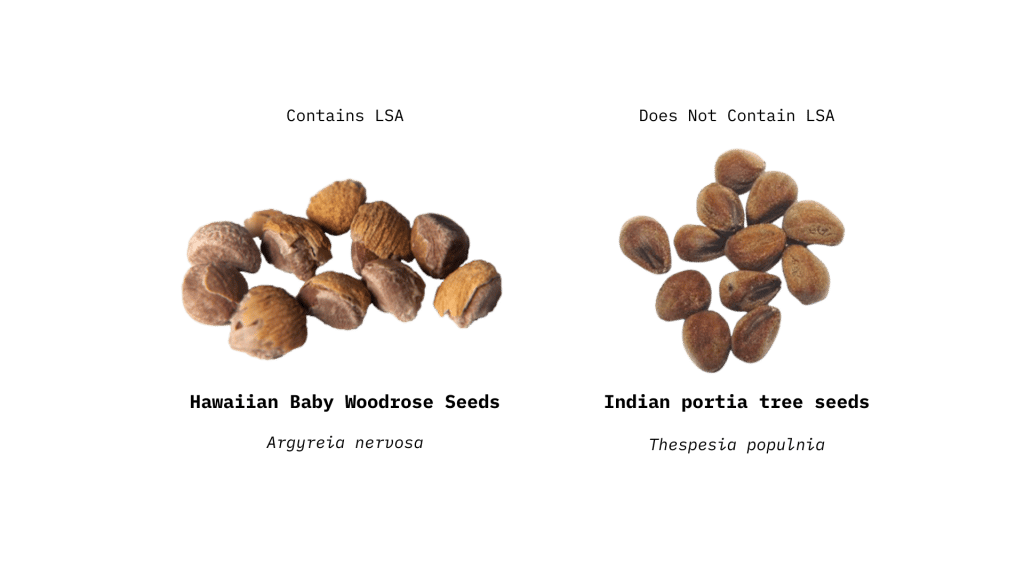
2. Is LSA The Only Active Ingredient in Morning Glory?
No, there are nearly a dozen alkaloids with known psychoactive effects in the morning glory seeds. LSA (ergine) is considered the active ingredient — however, when isolated from the plant, this substance has very little psychoactivity.
It’s very likely that some or all of these other alkaloids either enhance the psychedelic effects of LSA or offer psychedelic activity of their own.
Ergometrine and its isomers have been shown to have psychedelic effects but may also be responsible for many of the negative side effects of morning glory as well [3]. This compound is sometimes used to prevent postpartum bleeding but has been linked with potentially lethal side effects in its pure form [4].
Aside from LSA, morning glory contains the following compounds:
- D-lysergic acid hydroxyethylamide (LAH)
- Ergometrine
- Isoergine
- Lysergene
- Lysergol
- Agroclavine
- Chanoclavine
- Chanoclavine II
- Chanoclavine-I
- Elymoclavine
It’s believed the ergot alkaloids in morning glory are at least in part connected to an endophytic fungus transmitted to the plant from its seeds. The morning glory seed is particularly susceptible to fungal infection, which is why so many garden variety seeds have been treated with an antifungal.
It’s possible the morning glory vine has a symbiotic relationship with a species of fungi similar to ergot that drive the production of ergot alkaloids — rather than the plant itself.
3. How Long Does LSA Stay in the System?
A study exploring this question found that LSA was detectable up to 24 hours after ingestion and undetectable after 48 hours in both blood and urine samples [5].
The lower limit of detectable LSA was 0.05 and 0.17 ng/mL in blood and 0.15 ng/mL in urine.
4. Which Morning Glory Seeds Contain LSA?
A study published in 2016 analyzed 5 different species and cultivars of morning glory to assess their LSA and total alkaloid content [2]. Only 3 out of the 5 plants tested contained ergot alkaloids.
The morning glory cultivar by the name of “Heavenly Blue” in both the Ipomoea purpurea and Ipomoea tricolor species both contained notable concentrations of ergot alkaloids.
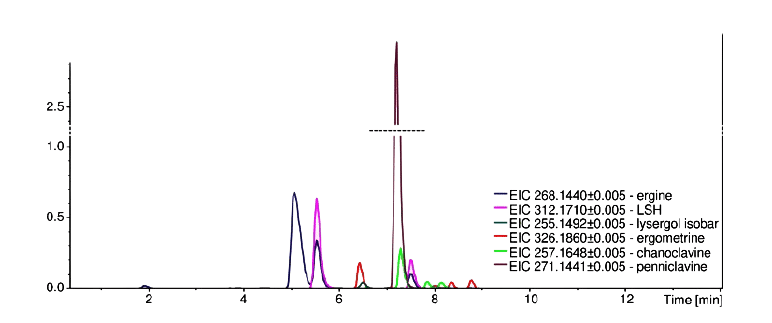
(Source: Nowak et al., 2016)
5. What is Lysergic Acid Amide Soluble In?
LSA is soluble in ethanol, methanol, and ether and insoluble in light petroleum and water.
The most common extraction method used to remove LSA from morning glory or HBWR seeds is to first de-fat the seeds using petroleum ether, followed by ethyl alcohol. Petroleum ether is not technically an ether and will leave most of the LSA behind. Ethyl alcohol is then used to dissolve and remove the LSA from what remains in the seed pods.
6. Can LSA Help With Migraines or Cluster Headaches?
A study from 2017 found that people with cluster headaches and migraine headaches who took low doses of LSA experienced marked improvement in both the severity and frequency of cluster headaches [1].
There are dozens of reports online with people suggesting that microdoses of LSA or morning glory extract help with their migraines as well.
LSA and other lysergamide alkaloids have known vasoconstricting activity. It’s thought that one of the primary causes of migraine headaches is a spasm of the arteries feeding blood to the brain.
There are several pharmaceutical migraine medications that work by causing the blood vessels to constrict (such as the triptan class of drugs). Triptans also interact with serotonin — which has also been linked as a potential cause for migraine attacks.
LSA from morning glory and HBWR may provide its antimigraine effects through a similar mechanism of action — by stopping the spasm of blood vessels in the brain and increasing serotonergic activity in certain regions of the brain.
More research is needed to fully understand this effect.
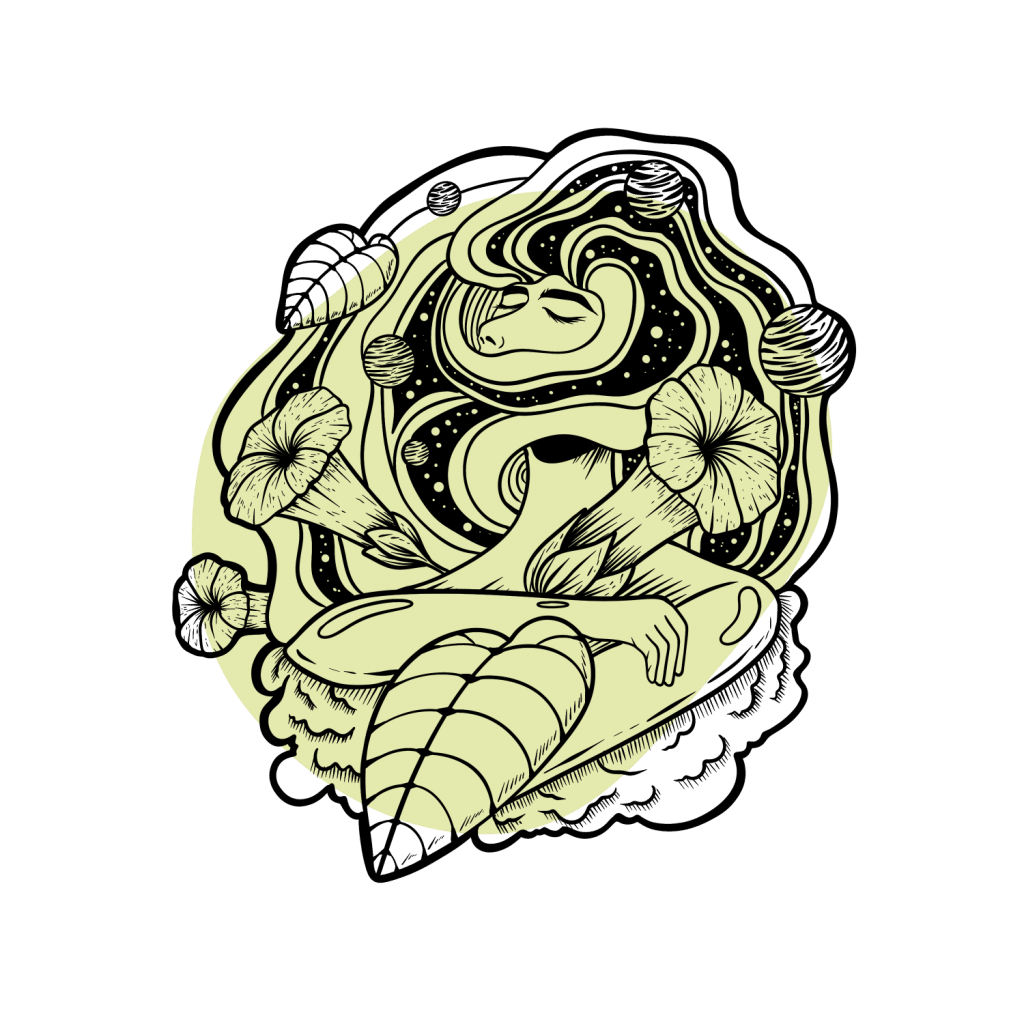
Final Thoughts: What is LSA?
LSA is the primary active ingredient in morning glory and Hawaiian Baby Woodrose seeds. It’s a formidable psychedelic with effects most comparable to LSD but with a more sedative lean. Neither of these plants has been banned and can be bought online or at local garden shops. Only LSA extracts are considered illegal.
Because of its status as a “legal high,” — LSA-containing plants are fairly popular within the psychonaut community.
Despite its popularity, there’s surprisingly little research available on the effects of this substance. Most likely, the reason for this is the side effects associated with psychoactive doses.
Eating the raw seeds often leads to nausea and vomiting for the first 1–2 hours of the experience. Making a tincture or cold water extraction is the best way to avoid or reduce these effects.
While it’s true this psychedelic is milder than LSD at lower doses, do not underestimate this substance. Doses higher than roughly 100 morning glory seeds or 6 Hawaiian Baby Woodrose seeds should always be accompanied by a responsible and trusted trip sitter. Expect parts of the experience to be particularly challenging with this psychedelic.
References Cited in This Article
- Andersson, M., Persson, M., & Kjellgren, A. (2017). Psychoactive substances as a last resort—a qualitative study of self-treatment of migraine and cluster headaches. Harm reduction journal, 14(1), 1-10.
- Nowak, J., Woźniakiewicz, M., Klepacki, P., Sowa, A., & Kościelniak, P. (2016). Identification and determination of ergot alkaloids in Morning Glory cultivars. Analytical and bioanalytical chemistry, 408(12), 3093-3102.
- Dawson, P., & Moffatt, J. D. (2012). Cardiovascular toxicity of novel psychoactive drugs: lessons from the past. Progress in Neuro-Psychopharmacology and Biological Psychiatry, 39(2), 244-252.
- Ibrahim, S. M., Mustafa, E., & Louon, A. (2008). Postpartum severe sinus bradycardia following methylergonovine administration. Journal of International Medical Research, 36(5), 1129-1133.
- Paulke, A., Kremer, C., Wunder, C., & Toennes, S. W. (2012). Analysis of lysergic acid amide in human serum and urine after ingestion of Argyreia Nervosa seeds. Analytical and bioanalytical chemistry, 404(2), 531-538.

